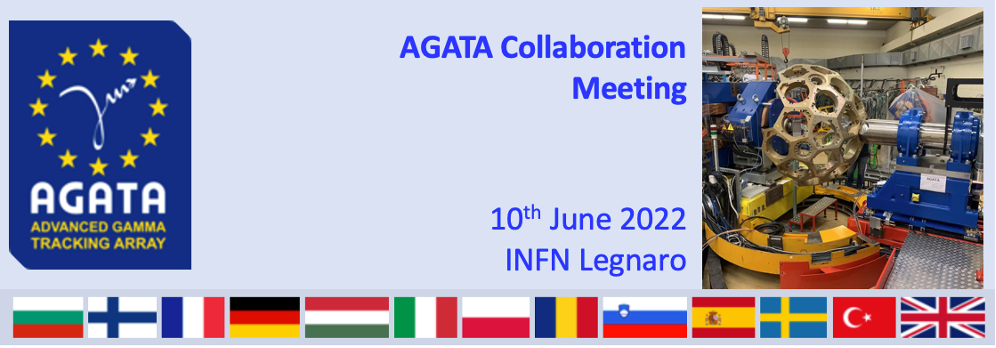Speaker
Description
The E664 experiment at GANIL aimed to investigate the nuclear structure in the Z~50 region through a measurement of lifetimes of excited states in $^{106,108}$Sn using the Recoil Distance Doppler Shift (RDDS) method. The nuclei of interest were populated via multi-nucleon transfer reactions between a 770-MeV $^{106}$Cd beam and a $^{92}$Mo target. The emitted gamma rays were detected by the AGATA tracking array, while the complete identification of the reaction products was obtained with the VAMOS++ spectrometer. The main physics goals of this experiment were accomplished [1] while additionally a number of lifetimes in the $^{102-108}$Cd isotopes were measured using the same technique [2].
The excited states in $^{106}$Cd were populated through inelastic scattering, and thanks to the position sensitivity of VAMOS++ the cross sections for this process could be analyzed as a function of the scattering angle. Since under the experimental conditions the Cline’s safe distance criterion, which ensures a purely electromagnetic interaction between the collision partners, was not fulfilled, the nuclear interaction is expected to influence the cross-section distributions. This would a priori require a sophisticated analysis using a suitable model to include the nuclear interaction between the reaction partners. While certain global optical model potentials suitable for this beam-target combination exist, they would still require additional adjustments to elastic scattering data, which is not available for this particular case.
The possibility to circumvent such model-dependent analysis was explored by performing a Coulomb-excitation analysis, with the coupled-channel code GOSIA, of the data collected at the smallest scattering angles. The balance between Coulomb and nuclear interaction in the population of individual excited states was investigated by comparing the experimental $γ$-ray yields in the full scattering angle range with the predicted $γ$-ray yields, obtained with GOSIA.
This study demonstrates that such unsafe data, rarely analyzed, yet often collected as a by-product in various experiments that employ position-sensitive particle detectors, can be used to correctly evaluate the reduced transition probabilities between certain low-lying states. An evaluation of the effects of the nuclear interaction on the experimental data will be presented, including a comparison of the transitional E2 matrix elements obtained with two independent techniques, i.e. Coulomb excitation and the RDDS method.
[1] M. Siciliano et al, Phys. Lett. B 806 (2020) 135474
[2] M. Siciliano et al, Phys. Rev. C 104 (2021) 034320

